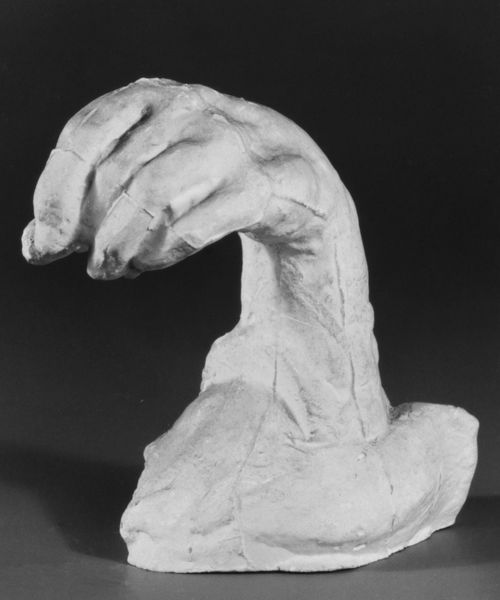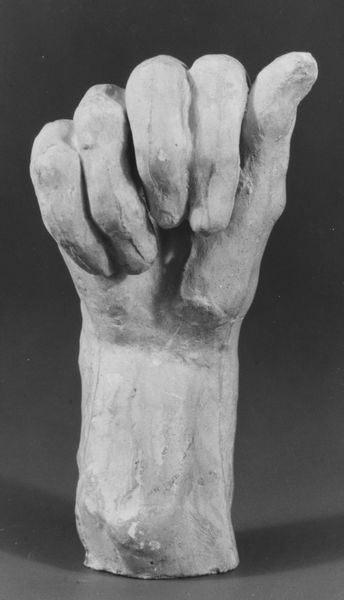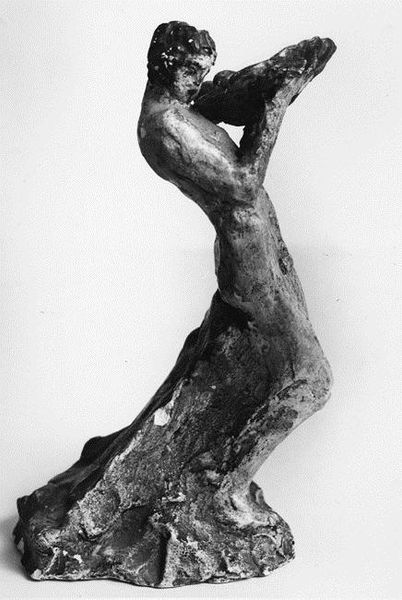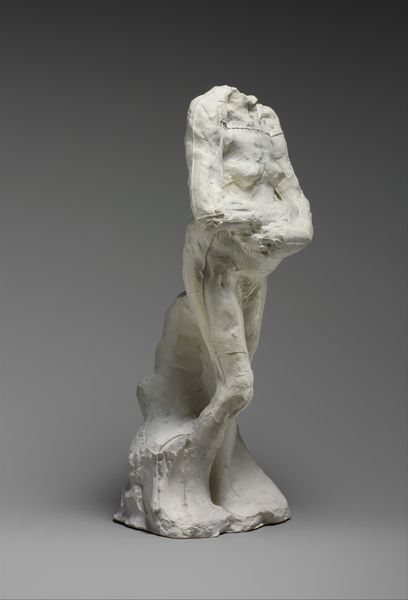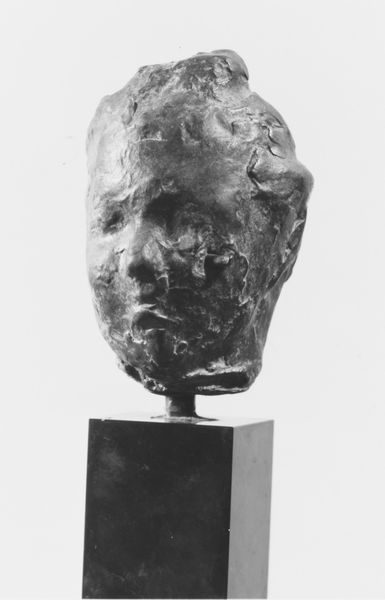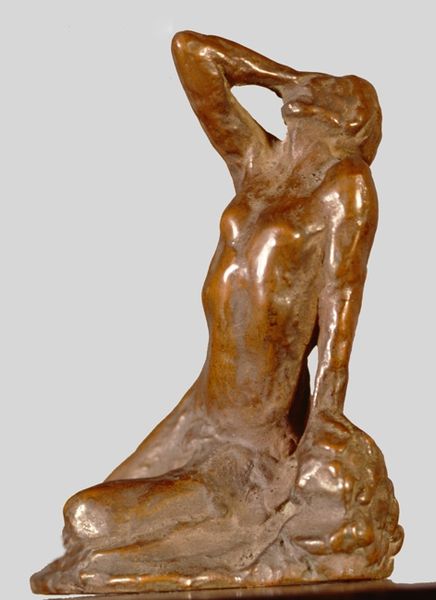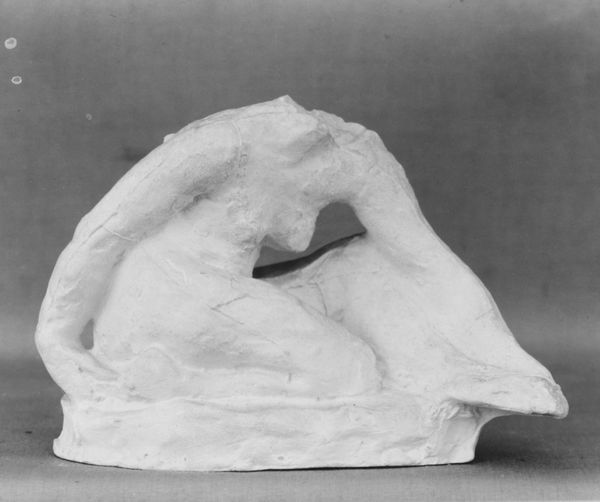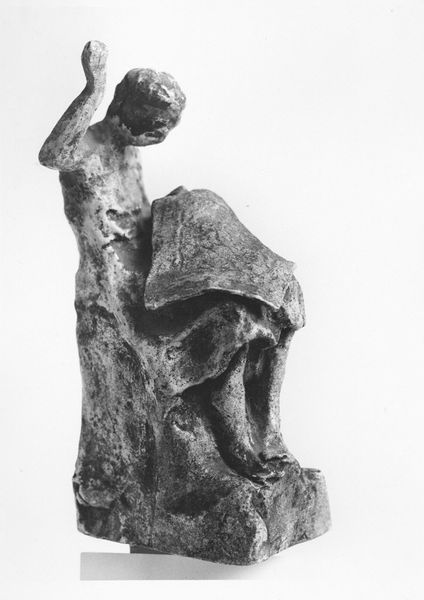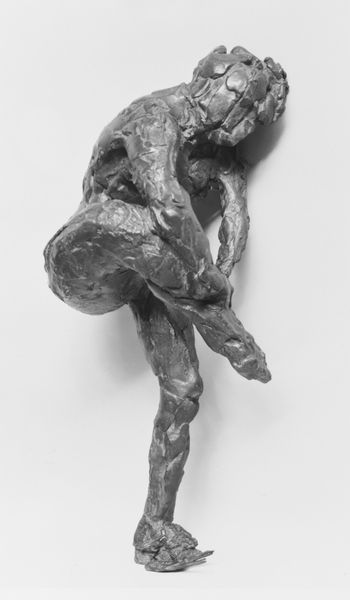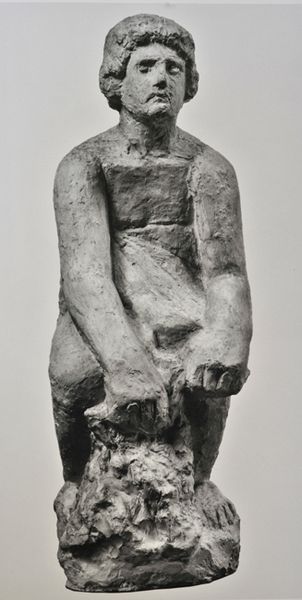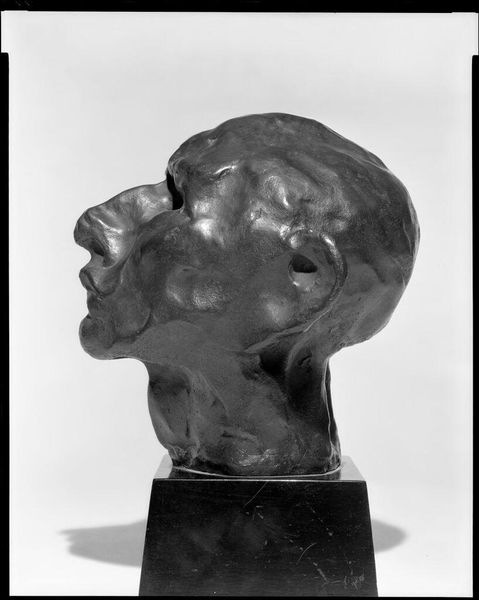
Dimensions: Height: 3 1/4 in. (8.3 cm)
Copyright: Public Domain
Auguste Rodin made this plaster sculpture "Hand with base" at an unknown date. Rodin was living in Paris at a time when society was rapidly changing. The fragment of a hand is isolated and presented on a rough-hewn base. This challenges the traditional expectations of sculpture, which typically presented idealized human figures or heroic subjects. Rodin's choice to focus on a fragment can be seen as a reflection of the changing social landscape, where traditional values were being questioned. The hand, often associated with labor and creativity, may symbolize the changing role of the individual in an increasingly industrialized society. In understanding Rodin's sculpture, historians often turn to letters, reviews, and exhibition catalogs. We can begin to understand this piece as part of a larger conversation about the role of art in a rapidly modernizing world. This sculpture reflects the social and institutional shifts in late 19th-century Paris, where artists were pushing the boundaries of traditional art forms.
Comments
No comments
Be the first to comment and join the conversation on the ultimate creative platform.
